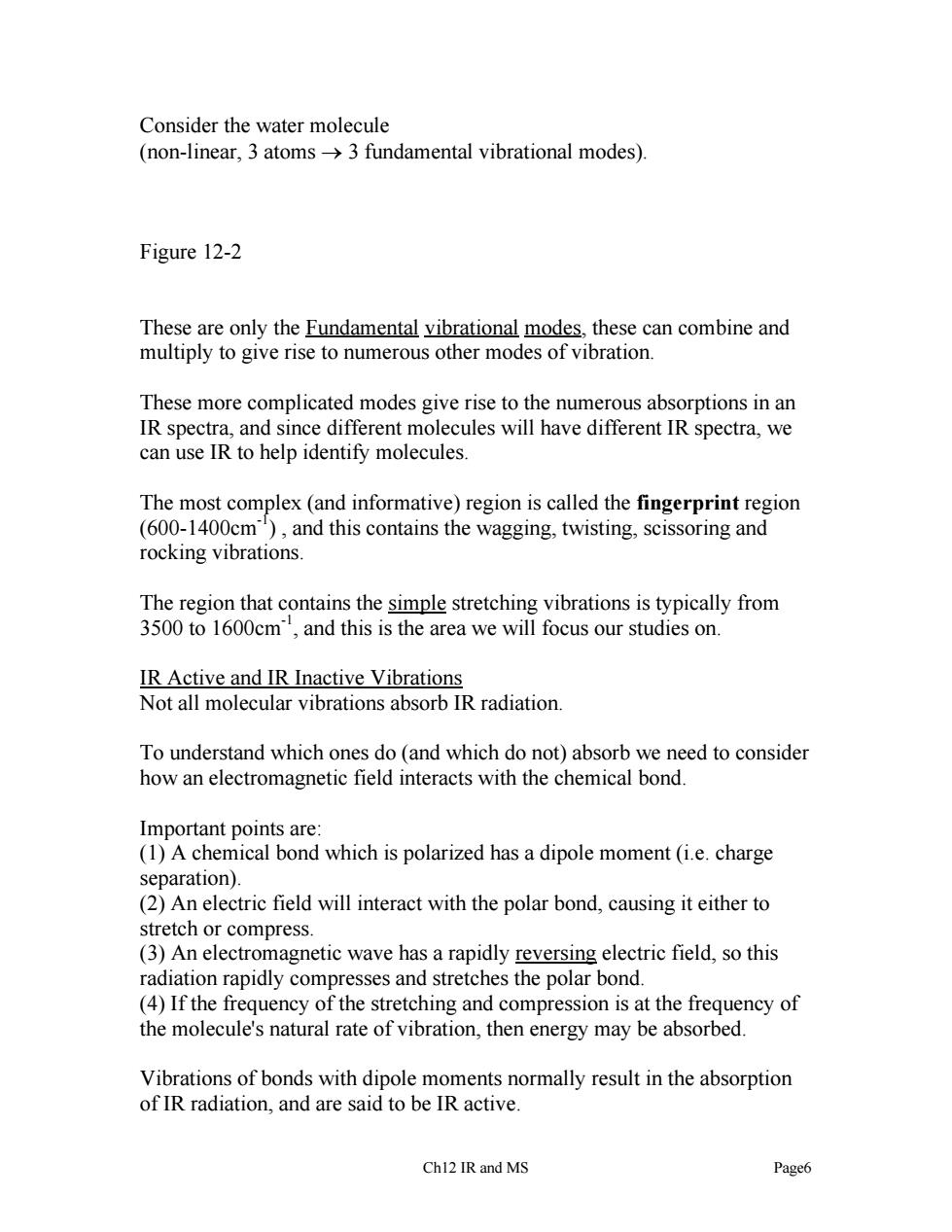正在加载图片...

Consider the water molecule (non-linear,3 atoms->3 fundamental vibrational modes) Figure 12-2 These are only the Fundamental vibrational modes,these can combine and multiply to give rise to numerous other modes of vibration. These more complicated modes give rise to the numerous absorptions in ar IR spectra,and since different molecules will have different IR spectra,we can use IR to help identify molecules. The most complex(and informative)region is called the fingerprint region (600-1400cm),and this contains the wagging,twisting,scissoring and rocking vibrations. The region that contains the simple stretching vibrations is typically from 3500 to 1600cm,and this is the area we will focus our studies on. IR Active and IR Inactive Vibrations Not all molecular vibrations absorb IR radiation. To understand which ones do(and which do not)absorb we need to consider how an electromagnetic field interacts with the chemical bond. Important points are: (1)A chemical bond which is polarized has a dipole moment(i.e.charge separation). (2)An electric field will interact with the polar bond,causing it either to stretch or compress. (3)An electromagnetic wave has a rapidly reversing electric field,so this radiation rapidly compresses and stretches the polar bond. (4)If the frequency of the stretching and compression is at the frequency of the molecule's natural rate of vibration,then energy may be absorbed. Vibrations of bonds with dipole moments normally result in the absorption of IR radiation,and are said to be IR active. Ch12 IR and MS Page6 Consider the water molecule (non-linear, 3 atoms → 3 fundamental vibrational modes). Figure 12-2 These are only the Fundamental vibrational modes, these can combine and multiply to give rise to numerous other modes of vibration. These more complicated modes give rise to the numerous absorptions in an IR spectra, and since different molecules will have different IR spectra, we can use IR to help identify molecules. The most complex (and informative) region is called the fingerprint region (600-1400cm-1) , and this contains the wagging, twisting, scissoring and rocking vibrations. The region that contains the simple stretching vibrations is typically from 3500 to 1600cm-1, and this is the area we will focus our studies on. IR Active and IR Inactive Vibrations Not all molecular vibrations absorb IR radiation. To understand which ones do (and which do not) absorb we need to consider how an electromagnetic field interacts with the chemical bond. Important points are: (1) A chemical bond which is polarized has a dipole moment (i.e. charge separation). (2) An electric field will interact with the polar bond, causing it either to stretch or compress. (3) An electromagnetic wave has a rapidly reversing electric field, so this radiation rapidly compresses and stretches the polar bond. (4) If the frequency of the stretching and compression is at the frequency of the molecule's natural rate of vibration, then energy may be absorbed. Vibrations of bonds with dipole moments normally result in the absorption of IR radiation, and are said to be IR active. Ch12 IR and MS Page6